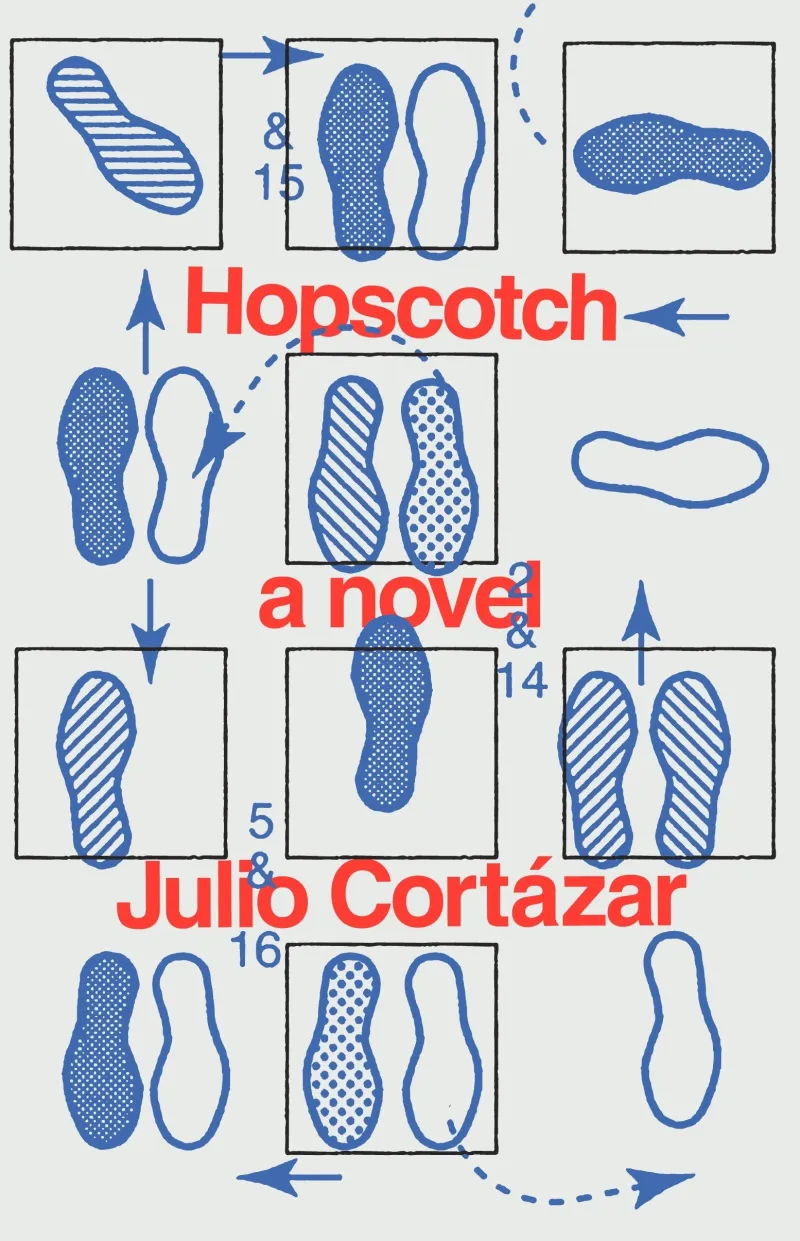An overview of
Hopscotch
by Julio Cortázar
2.Pantheona
a.1987
Hopscotch summarized (in two sentences or less)
In 'Hopscotch', Cortázar turns a nonlinear narrative into a dizzying dance of choices, philosophy, and love's recklessness. It's like trying to solve a Rubik's Cube after someone's rearranged the stickers, all while riding a roller coaster through an existential theme park.
Hopscotch Trivia and/or (Un)fun Facts
Cortázar initially leaned towards "Mandala" for the book title—inspired by that profound Hindu symbol of harmony, which resonated well with the protagonist.
But after some thought, he settled on "Hopscotch"—the timeless game where kids toss stones with little precision and then use them to navigate a network of poorly-chalked rectangles for a few minutes before getting bored.
Why Hopscotch Is Challenging
Aside from the first and last chapter, the chapters of the book can be read in any order.
Discussion Questions about Hopscotch
Hopscotch Research Prompts for Postdocs:
-
"Hopscotch" employs a fragmented narrative structure, allowing readers to "hop" between chapters. How does this nonlinear storytelling technique challenge traditional literary paradigms? Can we consider this as a form of metafictional commentary on the act of reading itself?
The novel delves into existential themes and showcases the internal struggles of its characters, particularly Horacio Oliveira. How does Cortázar utilize existentialist philosophy to dissect the post-colonial identity crisis in Latin America? Is Oliveira's 'displacement' a metaphorical representation of broader sociopolitical issues?
Cortázar uses Paris as more than just a setting; it's almost a character in the story. How does the portrayal of Paris serve as a counterpoint to Buenos Aires, and what does this dual setting reveal about the complexities of cultural hybridity and identity?
Hopscotch Conversation Starters for Normal People:
- The book offers two ways to read it: linearly or by "hopscotching" through the chapters. How does your chosen path affect your understanding of the story? Does it change your perspective on the characters?
Horacio Oliveira is a complicated guy, to say the least. What do you think his character says about the struggle to find meaning or purpose? Do you see any parallels between his journey and the greater societal issues of his time?
"Hopscotch" is big on its settings, especially Buenos Aires and Paris. How do these cities shape the narrative and characters? Do they reflect or contrast the emotional states of the characters?
Questions about Hopscotch that you can ask your dog:
- Horacio has two friends: Talita and Traveler. Why do you think he likes talking to Talita more than Traveler sometimes?
Horacio lives in two places: one with lots of people (Buenos Aires) and one with tall buildings (Paris). Which place do you think he likes more and why?
Horacio has a cat named Klo. What does the cat do in the story? Do you like cats? 🐱
The Most Amusing Hopscotch Review I Can Find
It's an amazing book! You can read it page by page or according to the code from the back of the book or even according to your own system and it will never make sense!
★★★☆☆
—Kinga via Goodreads
—Kinga via Goodreads
